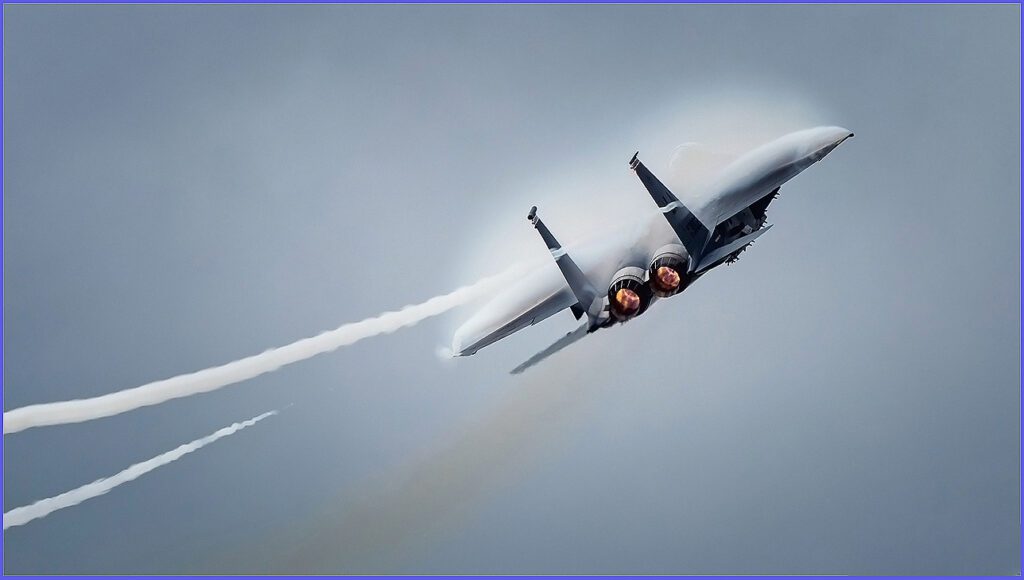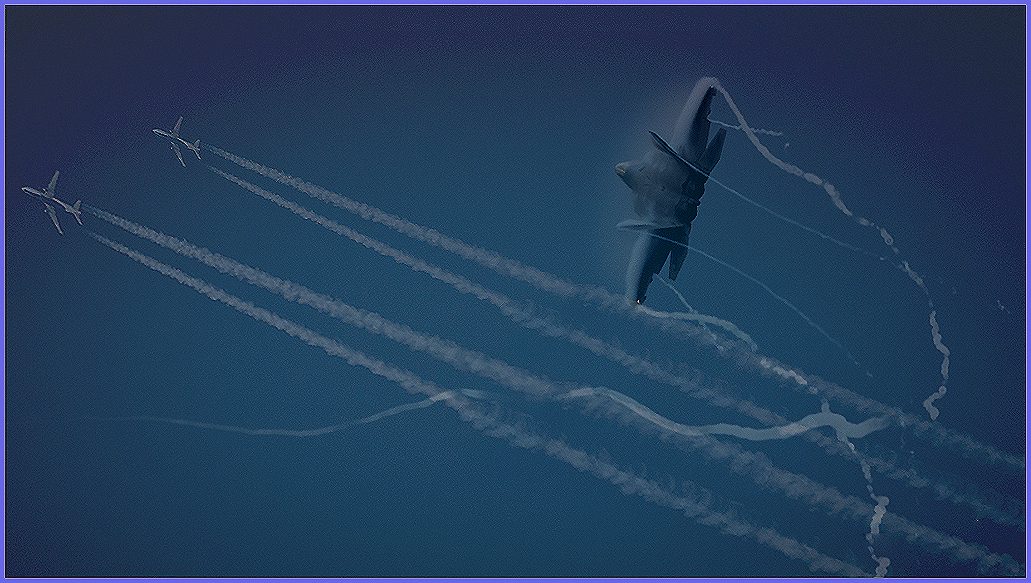At major international airports, you have likely noticed long white trails in the sky that often remain visible for a significant amount of time. Let’s Delve into the Mystery of Engine Exhaust Contrails, derived from condensation trails, which are linear clouds formed by aircraft flying at extremely high altitudes, consisting mainly of water vapour/vapour.
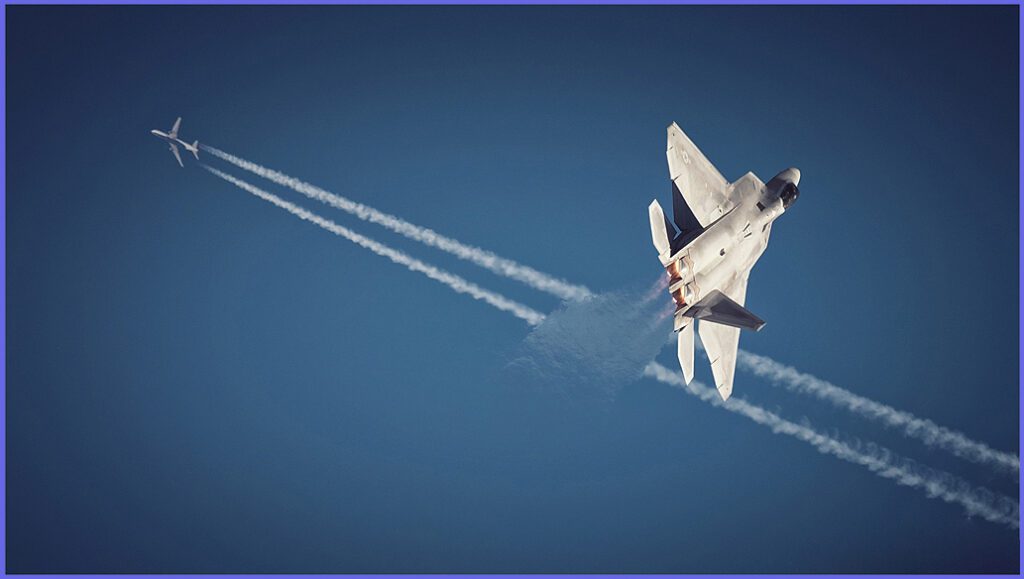
When an aircraft navigates through the frigid, low-pressure atmosphere, the intense heat from the exhaust gases, which contain water vapour and various particles emitted by the jet engines, undergoes rapid cooling.
This rapid cooling process causes the water vapor to condense and crystallizes into ice particles, resulting in the creation of visible trails trailing behind the aircraft. The formation of these trails can also occur due to changes in air pressure around the wingtip vortices or across the entire wing surface. These vortices are often visible with fighter jets flying at low altitudes during airshows.

The appearance of contrails (also known as Vapor trails) varies based on atmospheric factors such as humidity, temperature, and wind. Typically forming at altitudes above 8,000 meters (26,000 feet), where the air is cold and dry, contrails come in two primary types: short-lived and persistent.
Short-lived contrails appear briefly but quickly dissipate, often due to lower humidity levels. In contrast, persistent contrails can last for hours, sometimes spreading out to create cirrus clouds that may impact weather and climate patterns.
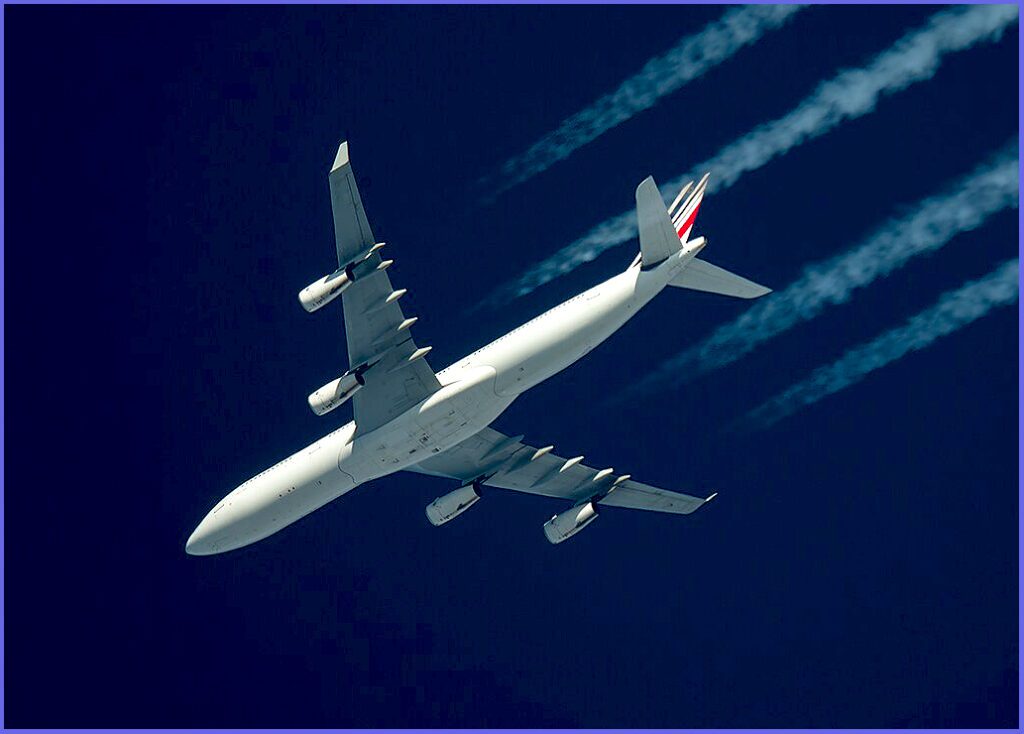
Contrails are clouds generated by human activities and classified as homogenitus clouds. Understanding persistent contrails is important in studying climate change because they can amplify the greenhouse effect by trapping heat in the Earth’s atmosphere.
The impact of contrails on global warming and aviation’s role in climate change is an active area of scientific investigation. Researchers are evaluating the extent of these impacts and looking for ways to lessen them, such as by changing flight paths or creating more efficient engine technologies.
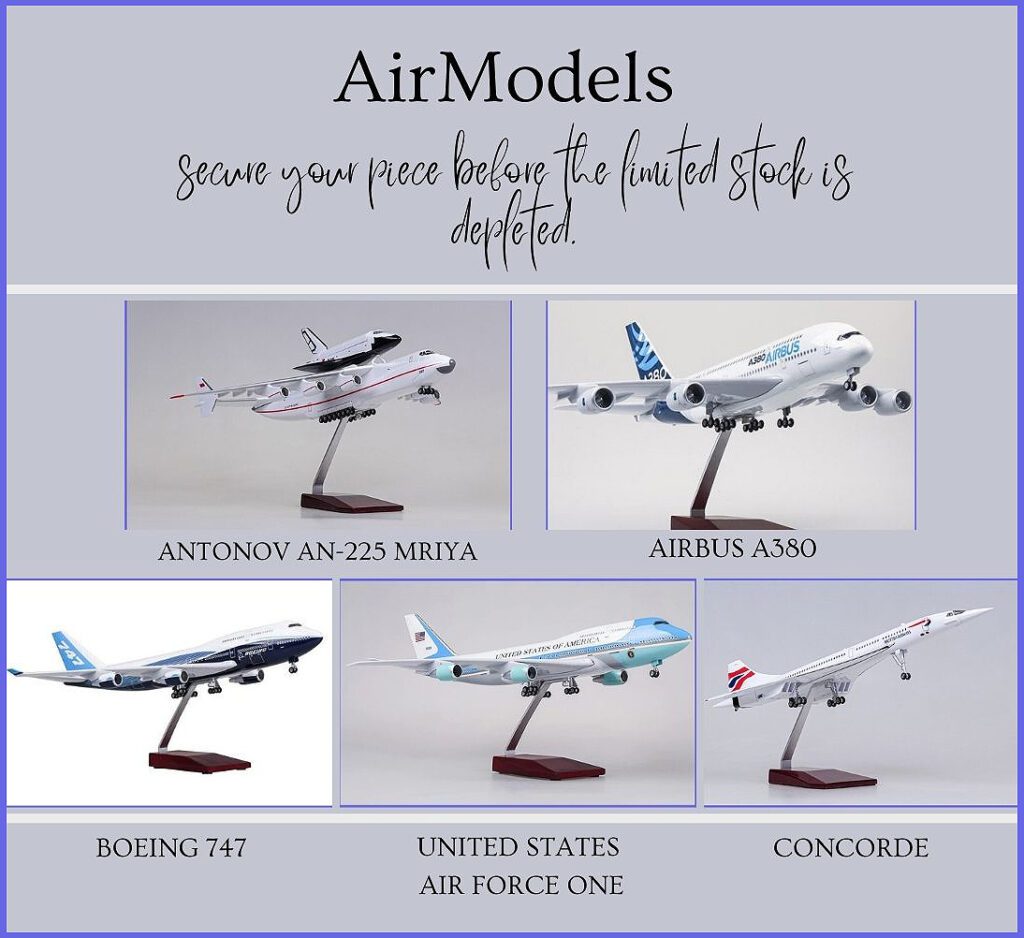
Understanding Commercial Aircraft Engine Exhaust Contrail Phenomena
This phenomenon is influenced by various atmospheric conditions and aircraft operations, making it a serious and multifaceted area of study.
Formation of Contrails
Engine exhaust primarily consists of water and carbon dioxide, which are the byproducts of burning hydrocarbon fuels. It also contains water vapour and small amounts of other particles, including some unburned fuel from the jet engines. Exhaust contrails typically form at high altitudes, generally above 8,000 meters (26,000 feet), where air temperatures are below -36.5 °C (-34 °F).
At these high altitudes, the water vapour from the exhaust enters the cold atmosphere, causing a localized increase in water vapour that can push the relative humidity of the air beyond the saturation point.

The vapour then condenses into tiny droplets, which freeze if the temperatures are low enough. These numerous tiny droplets and ice crystals form contrails. At high altitudes, supercooled water vapour needs a trigger to start condensation or deposition. Particles from the aircraft’s exhaust act as this trigger, causing the vapour to condense rapidly.
Contrails can also form closer to the ground when conditions are sufficiently cold and humid, such as during takeoff or landing in winter weather.
This occurs when the temperature and humidity at lower altitudes are similar to those found at high altitudes, allowing water vapour to condense and freeze. (Archived from NASA pdf)

Types of Contrails
Short-lived Contrails: These dissipate quickly, usually within minutes, as they form in less humid conditions where the ice crystals sublimate back into water vapour.
Here are a few examples: Regional turboprop planes flying at lower altitudes, some military jets flying at lower altitudes or during manoeuvres can produce short-lived contrails, especially during takeoff or landing, and certain business jets flying at lower altitudes may produce contrails that dissipate quickly due to lower engine output and less moisture compared to larger commercial airliners.
Additionally, helicopters can sometimes produce short-lived contrails, particularly during cold and humid weather. Overall, all these types of aircraft can produce contrails that dissipate rapidly, especially in conditions of low humidity.

Persistent Contrails: These can last hours and spread out to form cirrus clouds. They occur in highly humid conditions where ice crystals continue to grow and spread due to atmospheric winds.
Persistent contrails usually form behind high-flying commercial jet aircraft, particularly those equipped with high-bypass turbofan engines common on modern airliners. However, they can also form behind military cargo planes, strategic bombers, and certain business jets flying at high altitudes. Key factors contributing to their formation include high altitude, high humidity, and high-bypass turbofan engines.

Understanding the Environmental Impact of Contrails
Persistent contrails do not directly threaten public health. They are line-shaped clouds made of ice particles, which evaporate when atmospheric conditions become dry. These ice particles in contrails do not reach the Earth’s surface because they fall slowly and evaporate in the lower atmosphere.
However, contrail cloudiness might contribute to human-induced climate change, which could have significant impacts on public health and the environment.

The impact of contrails on climate is a crucial research area. Persistent contrails and the cirrus clouds they generate can capture infrared radiation emitted from the Earth’s surface, thus adding to the greenhouse effect and global warming. Although they can reflect incoming solar radiation to some extent, the overall effect is believed to contribute to warming.
Additionally, contrails can influence regional weather patterns by altering cloud cover and potentially affecting precipitation. The extent of these impacts is a subject of ongoing study, with a focus on understanding the balance between their warming and cooling effects.

Mitigation Strategies
- Optimizing Flight Routes: Adjusting altitudes and flight paths to avoid atmospheric conditions conducive to contrail formation.
- Improving Engine Efficiency: Developing engines that produce less water vapour and fewer particulates to reduce contrail formation.
- Alternative Fuels: Using sustainable aviation fuels ( biofuels) that produce fewer emissions can help minimize contrail formation.

Exploring Distrails: Disappearing Contrails in the Sky
Distrails, short for “dissipation trails,” are the opposite of contrails. They occur when aircraft pass through thin cloud layers, causing the cloud particles to evaporate or sublimate, leaving a clear path or hole behind the plane. Distrails form due to the heat and turbulence generated by aircraft engines, which temporarily disrupt the cloud formation process.
They are typically short-lived and can be observed as transient breaks or gaps in clouds where an aircraft has passed. Distrails are a fascinating atmospheric phenomenon that demonstrates the interaction between aircraft and natural cloud formations.

In conclusion, the exploration of engine exhaust contrails reveals a complex interplay between aircraft emissions, atmospheric conditions, and climate impacts.
Understanding the formation and behaviour of contrails is crucial for addressing their environmental consequences, particularly their role in climate change. Mitigation strategies such as optimizing flight routes, improving engine efficiency, and exploring alternative fuels offer potential solutions.
Moreover, phenomena like distrails add depth to our understanding of aircraft-cloud interactions. Continued research into contrails and their effects will be vital for developing sustainable aviation practices and mitigating aviation’s contribution to climate change.
